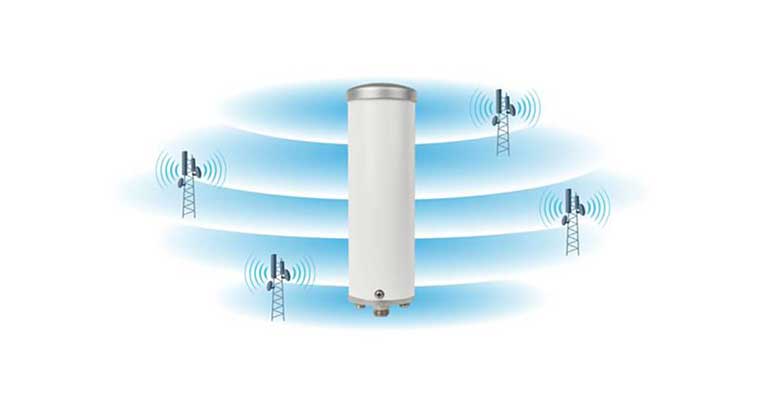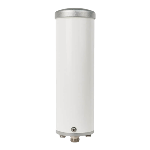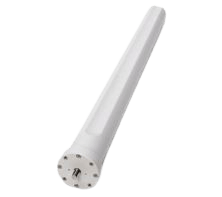A Guide to Omnidirectional Cellular Antennas: How & When to Use Them
Boost Cell Signal from All Directions
One of the most important parts of your cell signal booster setup is the outdoor donor antenna. Its job is to capture existing 4G and 5G signals from nearby cell towers and send them to your booster, which amplifies and rebroadcasts them indoors. This helps you get clearer calls, faster data, and more reliable coverage wherever you need it.
There are two main types of donor antennas: directional and omnidirectional. While directional antennas focus on a single direction, an omnidirectional antenna collects signal from all around you. In this guide, you'll learn how omnidirectional antennas work, when they're the best fit, and how they can make boosting your cell signal simple and effective.
We fix poor cell phone signal! Find the right signal booster for you:




What is an Omnidirectional Antenna?
An omnidirectional antenna (often called an "omni") is a type of donor antenna designed to receive and send signal in every direction, similar to how a lamp spreads light evenly throughout a room. Instead of locking onto one tower like a directional antenna, an omni captures signal from multiple towers in a full 360° radius.
How Do Omnidirectional Antennas Work?

Omnidirectional antennas have a 360-degree radiation pattern, which allows them to both send and receive signal from every direction. This pattern helps your booster pull in the strongest available signals from multiple towers.
Because they don't need to be aimed, omni antennas are much simpler to set up than directional models, which must be carefully aimed at a specific cell tower. Just mount the antenna outdoors in a spot with clear, open surroundings, and it will automatically capture available cell signals in the area.
This also makes them ideal for multi-carrier setups, since one antenna can capture signal from different carrier networks at the same time.
However, performance depends on the existing outdoor signal strength and quality. Since omnidirectional antennas pull in all nearby signals, including weaker or noisy ones, they tend to work best in locations that already have moderate outdoor coverage rather than extremely weak areas.
When Should an Omni Antenna Be Used?
Omnidirectional antennas perform best when the outdoor signal is strong to moderate. They're a great fit for cities, suburbs, or open spaces surrounded by multiple towers, as well as buildings where you need to support several carriers at once. Use our cell tower locator guide to identify where you're towers are.
They're also a good choice if you can't easily aim a directional antenna because of obstacles or limited roof access. And for mobile cell phone booster setups like RVs, trailers, or boats, an omni antenna keeps you connected while you're on the move.

Delivers high-gain performance across all major cellular frequencies (698–960 MHz and 1710–2700 MHz). Built for durable, weather-resistant outdoor use, it installs easily on a wall or mast and pairs perfectly with building signal boosters to improve coverage from multiple towers at once.
Shop Now: $99.99Is an Omnidirectional Antenna with Higher Gain Better?
Antenna gain measures how effectively an antenna can send and receive signal. Higher gain means the antenna can reach farther, but it also compresses its radiation beam, creating some blind spots. It's like squeezing a balloon. As you press from the top and bottom, it stretches outwards. Thus, the antenna can send and receive signals from farther away, but loses coverage above and below.

For most homes and businesses in areas with moderate outdoor signal, a regular-gain omnidirectional antenna works perfectly. It provides balanced coverage without needing precise placement.
A high-gain omnidirectional antenna, on the other hand, is best suited for flat, unobstructed environments, like rural areas and open fields, where cell towers are distant but positioned at similar elevation. Its tighter radiation pattern increases horizontal range for stronger long-distance performance.
However, high-gain antennas aren't always better. In hilly, uneven terrain, or dense city environments, their tighter vertical pattern can miss signals coming from different heights, limiting performance.

Powerful 25-inch antenna designed for stronger 5G and 4G performance across all major carriers. It continuously scans 360 degrees to capture the best available signal, offering up to 9 dBi of gain and wideband support from 617 to 3800 MHz, including T-Mobile Band 71 and 3.5 GHz 5G bands.
Shop Now: $349.99Omnidirectional Antenna Pros and Cons
Omnidirectional antennas are a popular choice for boosting cell signal in areas with good outdoor coverage, but like any antenna type, they come with strengths and tradeoffs.
Pros of Omnidirectional Antennas
- Simple installation: No need to aim toward a specific tower; just mount it in a clear, elevated spot.
- Multi-carrier coverage: Captures signal from all nearby towers, improving service for multiple networks at once.
- Ideal for strong-to-moderate signal areas: Works well in cities, suburbs, and open areas where towers are nearby.
- Reliable performance: Once installed, provides consistent coverage without needing fine-tuning or adjustment.
Cons of Omnidirectional Antennas
- Limited range: Doesn't reach as far as directional antennas, making it less effective in remote or weak-signal areas.
- Lower gain: Provides less signal amplification compared to Yagi or LPDA antennas.
- Sensitive to interference: Because it collects signals from all directions, it can also pull in unwanted or noisy signals that may reduce overall performance.
Frequently Asked Questions
What is the range of an omnidirectional antenna?
Can an omnidirectional antenna boost signal for multiple carriers?
Does an omnidirectional antenna need to be aimed?
Is an omnidirectional antenna better than a directional antenna?
Can I use an omnidirectional antenna for a mobile setup?
Ready to Boost Your Cell Signal? Let's Find the Right Antenna
Omnidirectional donor antennas make it easy to strengthen your cell signal without complicated setup or precise aiming. By collecting signal from every direction, they're a reliable choice for homes, offices, and mobile systems in areas with strong to moderate outdoor coverage.
If your goal is simple installation and dependable, multi-carrier performance, an omnidirectional antenna may be exactly what your booster system needs.
Not sure which type is best for your setup? Call our signal experts at Wilson Amplifiers at 1-800-568-2723 for free, personalized advice. We'll help you choose the right antenna and booster combination for the strongest possible signal, wherever you are.


Money Back Guarantee

Technical Support